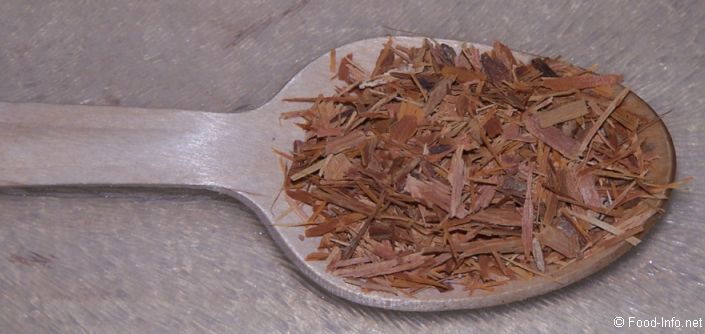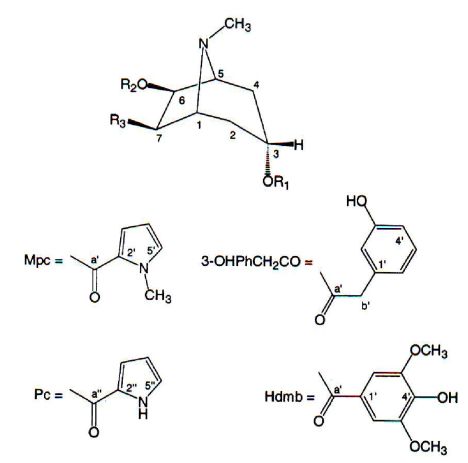|
|||||
|
|||||||
|




An initiative of :

|
| Food-Info.net> Questions and Answers > Food Products > Tea What is catuaba ?Catuaba is the name for an infusion made from the bark of Brazilian trees. It is often referred to as a tea, but as it is not derived from the Camellia sinensis plant, it is not a tea, but an infusion.  The name catuaba is used for the infusions of the bark of a number of trees. The most widely used barks are derived from the trees Trichilia catigua and Erythroxylum vacciniifolium. Other catuaba preparations use the bark of trees from the following genera or families : Anemopaegma, Ilex, Micropholis, Phyllanthus, Secondatia, Tetragastris and species from the Myrtaceae. It is often claimed that catuaba is derived from the tree ‘Erythroxylum catuaba', but this tree has been only described once, (in 1904), and it is not known today to what tree this name referred. The name E. catuaba is therefore not a recognised species. Local synonyms are Chuchuhuasha, Tatuaba, Pau de Reposta, Piratancara and Caramuru. A commercial liquid preparation, Catuama, contains multiple ingredients, one of these being catuaba from Trichilia catigua. Catuaba was used traditionally in Brazil by the local indigenous peoples as an analgesic, nervous stimulant and especially as an aphrodisiac. It is still widely used in Brazil for these purposes. Commercial catuaba preparations often seem to be made from locally available trees from totally different origin. In a survey in 2004, Kletter et al analysed 14 different samples and the majority was made of, or contained, Trichilia catigua bark. Chemical analysis showed large variations in chemical composition. Several alkaloids isolated from Erythroxylum vacciniifolium, catuabine A, B and C, are believed to enhance sexual function by stimulating the nervous system. There is, however, no scientific proof of the action of these alkaloids in humans. At present more than 20 different catuabines and catuabine derivatives have been isolated from this species. These are chemically related to cocaine, which is derived from a plant from the same genus. There are no indications that these alkaloids have cocaine-like properties, and so far no cocaine has been found in any catuaba preparation.
 Fig 1 : Structure of catuabines. Upper image is the basic structure of the catuabines. Examples of different residues (R 1 -R 3) are shown below, but other side groups, such as H, OH are also commonly present. From references 5 and 9. Other tree species used in catuaba preparations also contain many different alkaloids and possible bioactive compounds, but as yet their physiological effects on humans have not been described. Only a few studies have been published on detailed activity of catuaba preparations. In 1992 a Japanese group described the activity of an ‘E. catuaba' extract on HIV. It was stated that catuaba extracts may have anti-viral activity and may help against infections. Unfortunately it is until now unknown from which tree their preparation originated and the research has not yet been repeated or confirmed. In 2002 antimicrobial activity of Trichilia catigua extract was described, but from pure components and against only one type of bacteria. In 2001 a Brazilian group studied the effects of a Trichilia catigua extract on the erectile tissue of rabbits. It was observed that the extracts increased the muscle tone of these tissues, which could explain the aphrodisiacal properties of catuaba. Kletter et al did, however, not observe this effect in commercial catuaba preparations under similar experimental conditions. A more recent publication from 2004 studied the effects of a Trichilia catigua extract. It was concluded that the extract may have anti-inflammatory properties as it could block some pathway involved in infections. In 2004/5 Campos et al studied the a ntidepressant-like effects of Trichilia catigua in mice and rats and concluded that extracts could be of potential interest for the treatment of depressive disorders. References :
|
|
| ||
| Food-Info.net is an initiative of Stichting Food-Info, The Netherlands | ||||||